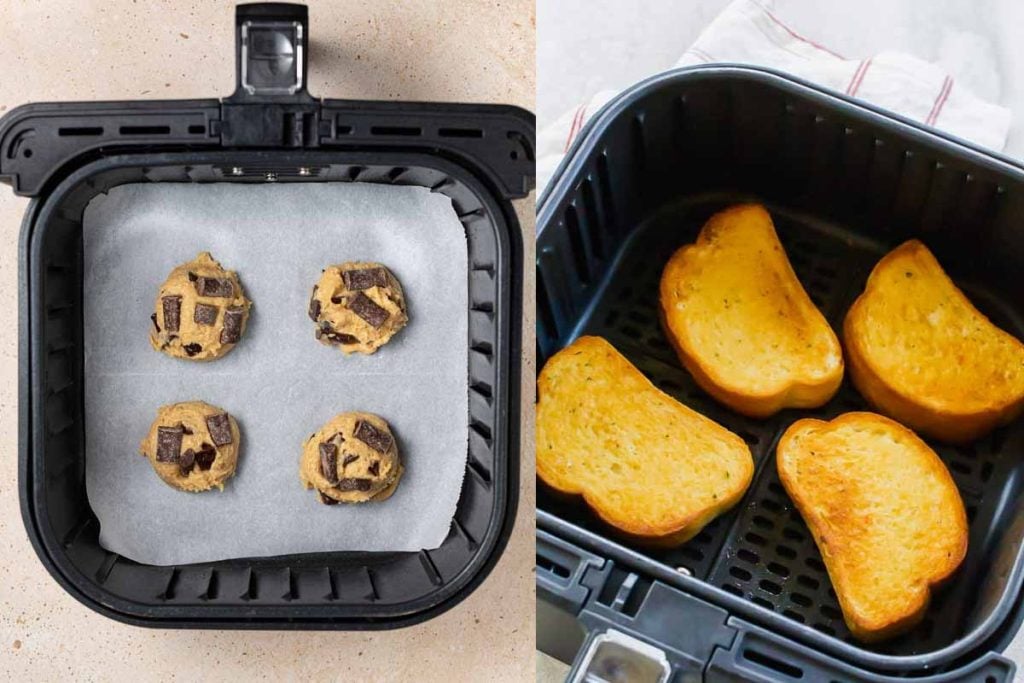Something about the air fryer keeps sparking curiosity. Its quick, crispy magic feels almost unreal—until one small habit makes you pause and think about what’s actually safe inside that basket. Foil looks harmless, maybe even like a smart shortcut, yet the truth has a few surprises. Whether it’s about taste, safety, or that perfect golden crunch, one thin sheet can make a bigger difference than you’d expect. The mystery remains: how much freedom does foil truly have in your favorite kitchen gadget?
How Heat, Airflow, and Foil Actually Behave
Air fryers aren’t microwaves; no sparks here. They circulate powerful convection heat, so foil doesn’t arc. That said, loose sheets can lift toward the heating element. Always weigh foil down with food. A light liner under fillets stops sticking and preserves tender flakes while the basket holes still breathe.
Crisp texture depends on moving air, not metal contact. The fan drives heat through the basket perforations, then around each bite. Foil mustn’t cap those vents. Keep pieces small, trimmed, and flat. Leave open edges so hot air can enter and exit. Do that, and your air fryer keeps its hallmark crunch.
The heat source often sits beneath the basket. Air rises from the base, then swirls. Lining the machine’s bottom chokes circulation and invites hot spots. Keep foil only on the basket floor, where food sits. Avoid draping sides. Smooth wrinkles that could trap grease and make cleanup harder, not easier.
Manufacturer Rules For Your air fryer
Brands publish different guidance, and it matters. Some warn against foil altogether. Philips, for instance, does not recommend it. Others allow it with limits. Frigidaire approves basket liners, not full-base coverings. These differences reflect design choices, from vent placement to fan power and the shape of the heating element.
Why the disagreement? Foil can interrupt airflow and lengthen cook times. A blocked path dulls browning, dries edges, and leaves centers pale. Check your manual for a line like “basket only,” then follow it. When in doubt, test a small batch and confirm even color before committing a full load.
Technique beats guesswork. Cut a modest sheet that fits the basket floor, not the bottom pan. Set food on the foil to anchor it before powering on. Avoid covering every hole. If juices pool, lift the sheet carefully after cooking. You’ll speed cleanup and protect coatings while your air fryer cooks evenly.
When Foil Makes Cooking Easier
Sticky, saucy foods drip and smoke. Think glazed wings or barbecue drumettes. A neat foil liner prevents sugars from burning onto the basket and pan. You still get circulation and caramelization, yet you skip the scorched residue. Trim edges snug so grease can’t run underneath and ignite.
Delicate fish deserves gentle handling. A thin sheet under salmon or cod keeps the skin intact and flakes tender. Slide the liner out like a sling and transfer the fillet whole. That saves plating stress, preserves seasoning, and avoids scraping that can scar nonstick finishes inside the compact chamber.
Crumbly coatings shed. Cutlets with loose breading or tempura bits sprinkle the basket, then scorch below. Foil corrals crumbs, limiting smoke and bitter flavors. You still want space around cutlets for air to move. Arrange in a single layer, keep gaps between pieces, and let the air fryer finish the crisp.
When Foil Is A Bad Idea
Skip foil with acidic dishes. Tomatoes, lemon, or vinegar can react with aluminum. That reaction may pit the sheet and leave a metallic taste. Use parchment instead, especially for lemon-pepper fish or tomato-glazed meatballs. You’ll get a clean release and protect flavors that should stay bright and fresh.
Mind paper choice and placement. Parchment works at typical temperatures, yet it must be weighted by food. Loose corners can lift into the heating element and singe. Never use wax paper; its coating can melt. Keep cutouts tidy, sized to the basket floor, and avoid blocking the primary airflow path.
Sometimes foil simply isn’t needed. Dry rubs and firm vegetables release cleanly. Excess lining can delay browning and mute crunch. If cleanup is already easy, skip liners and rely on the basket’s nonstick. You’ll shorten cook times, sharpen texture, and keep the air fryer working at peak efficiency.
Simple Cleaning Habits To Keep Your air fryer Like New
Light messes don’t demand a full scrub every time. Many users clean every other session. Removable parts—basket, tray, pan—often go in the dishwasher. The main unit never goes under water. Wipe it instead. Confirm the official care steps in your manual for your exact model.
Treat the nonstick coating kindly. Metal utensils and abrasive pads scratch and dull the surface. That leads to stubborn sticking and smoke later. Choose soft sponges and nylon tools. Harsh disinfectants rarely suit food-contact parts. Read labels first. Gentle beats strong here, especially on high-heat, coated interiors.
When grime sets, go simple. Mix baking soda with a splash of water into a spreadable paste. Rest it on baked-on spots, then wipe with a soft sponge. Plan recipes that won’t flood the chamber. Avoid especially messy projects, and your air fryer stays efficient, clean, and ready for weeknights.
Practical takeaways to use foil confidently and cook better
Foil belongs if you keep it anchored, trimmed, and basket-only. Avoid acidic sauces, choose parchment when needed, and never block vents. Follow your brand’s guidance, especially where airflow starts. Mind gentle cleaning so coatings last. Respect those basics, and your air fryer stays fast, safe, and reliably crisp.
